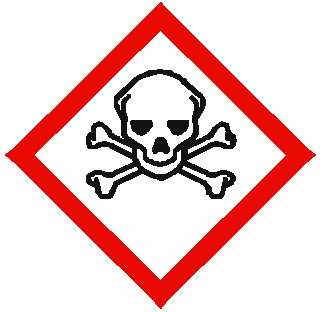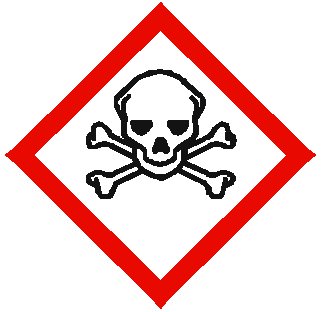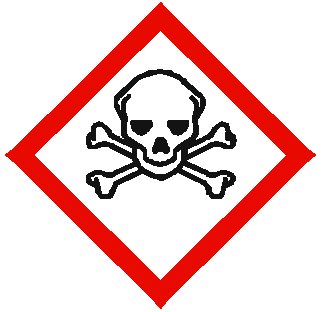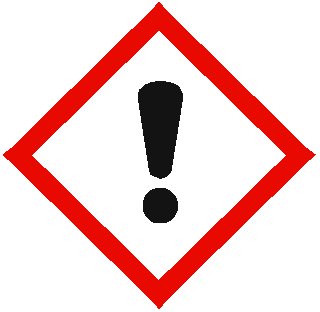Call us: +44 870 8 200 310
Or write: experts@regartis.com
Languages
Regulations
- Preamble
- TITLE I / GENERAL ISSUES
- TITLE II / HAZARD CLASSIFICATION
-
TITLE III / HAZARD...
-
CHAPTER 1 / Content of the label
- Article 17 / General rules
- Article 18 / Product identifiers
- Article 19 / Hazard pictograms
- Article 20 / Signal words
- Article 21 / Hazard statements
- Article 22 / Precautionary statements
- Article 23 / Derogations...
- Article 24 / Request for use...
- Article 25 / Supplemental...
- Article 26 / Principles of...
- Article 27 / Principles of...
- Article 28 / Principles of...
- Article 29 / Exemptions from...
- Article 30 / Updating...
- CHAPTER 2 / Application of labels
-
CHAPTER 1 / Content of the label
- TITLE IV / PACKAGING
- TITLE V / HARMONISATION OF...
- TITLE VI / COMPETENT...
-
TITLE VII / COMMON AND FINAL...
- Article 48 / Advertisement
- Article 49 / Obligation to...
- Article 50 / Tasks of the Agency
- Article 51 / Free movement clause
- Article 52 / Safeguard clause
- Article 53 / Adaptations to...
- Article 54 / Committee procedure
- Article 55 / Amendments to...
- Article 56 / Amendments to...
- Article 57 / Amendments to...
- Article 58 / Amendments to...
- Article 59 / Amendments to...
- Article 60 / Repeal
- Article 61 / Transitional provisions
- Article 62 / Entry into force
-
ANNEX I / CLASSIFICATION AND...
- 1. / PART 1: GENERAL...
-
2. / PART 2: PHYSICAL HAZARDS
- 2.1. / Explosives
- 2.2. / Flammable gases...
- 2.3. / Aerosols
- 2.4. / Oxidising gases
- 2.5. / Gases under pressure
- 2.6. / Flammable liquids
- 2.7. / Flammable solids
- 2.8. / Self-reactive...
- 2.9. / Pyrophoric liquids
- 2.10. / Pyrophoric solids
- 2.11. / Self-heating...
- 2.12. / Substances and...
- 2.13. / Oxidising liquids
- 2.14. / Oxidising solids
- 2.15. / Organic peroxides
- 2.16. / Corrosive to metals
- 3. / PART 3: HEALTH HAZARDS
- 4. / PART 4: ENVIRONMENTAL HAZARDS
- 5. / PART 5: ADDITIONAL HAZARDS
-
ANNEX II / SPECIAL RULES FOR...
- 1. / PART 1: SUPPLEMENTAL...
-
2. / PART 2: SPECIAL RULES...
- 2.1. / Mixtures containing lead
- 2.2. / Mixtures containing...
- 2.3. / Cements and cement mixtures
- 2.4. / Mixtures containing...
- 2.5. / Mixtures containing...
- 2.6. / Mixtures sold to the...
- 2.7. / Mixtures containing...
- 2.8. / Mixtures containing...
- 2.9. / Liquid mixtures...
- 2.10. / Mixtures not...
- 2.11 / Aerosols
- 3. / PART 3: SPECIAL RULES...
- 4. / PART 4: SPECIAL RULE...
- 5. / PART 5: LIST OF...
- ANNEX III / LIST OF HAZARD...
- ANNEX IV / LIST OF...
- ANNEX V / HAZARD PICTOGRAMS
- ANNEX VI / Harmonised...
- ANNEX VII / Translation...
3.1.4.: Hazard Communication
Table 3.1.3
Acute toxicity label elements
|
Classification |
Category 1 |
Category 2 |
Category 3 |
Category 4 |
|
GHS Pictograms |
|
|
|
|
|
Signal Word |
||||
|
Hazard Statement: — Oral |
H300: Fatal if swallowed |
H300: Fatal if swallowed |
H301: Toxic if swallowed |
H302: Harmful if swallowed |
|
— Dermal |
H310:Fatal in contact with skin |
H310:Fatal in contact with skin |
H311: Toxic in contact with skin |
H312: Harmful in contact with skin |
|
— Inhalation (see Note 1) |
H330:Fatal if inhaled |
H330: Fatal if inhaled |
H331: Toxic if inhaled |
H332: Harmful if inhaled |
|
Precautionary Statement Prevention (oral) |
P264 P270 |
P264 P270 |
P264 P270 |
P264 P270 |
|
Precautionary Statement Response (oral) |
P301 + P310 P321 P330 |
P301 + P310 P321 P330 |
P301 + P310 P321 P330 |
P301 + P312 P330 |
|
Precautionary Statement Storage (oral) |
P405 |
P405 |
P405 |
|
|
Precautionary Statement Disposal (oral) |
P501 |
P501 |
P501 |
P501 |
|
Precautionary Statement Prevention (dermal) |
P262 P264 P270 P280 |
P262 P264 P270 P280 |
P280 |
P280 |
|
Precautionary Statement Response (dermal) |
P302 + P352 P310 P321 P361 + P364 |
P302 + P352 P310 P321 P361 + P364 |
P302 + P352 P312 P321 P361 + P364 |
P302 + P352 P312 P321 P362 + P364 |
|
Precautionary Statement Storage (dermal) |
P405 |
P405 |
P405 |
|
|
Precautionary Statement Disposal (dermal) |
P501 |
P501 |
P501 |
P501 |
|
Precautionary Statement Prevention (inhalation) |
P260 P271 P284 |
P260 P271 P284 |
P261 P271 |
P261 P271 |
|
Precautionary Statement Response (inhalation) |
P304 + P340 P310 P320 |
P304 + P340 P310 P320 |
P304 + P340 P311 P321 |
P304 + P340 P312 |
|
Precautionary Statement Storage (inhalation) |
P403 + P233 P405 |
P403 + P233 P405 |
P403 + P233 P405 |
|
|
Precautionary Statement Disposal (inhalation) |
P501 |
P501 |
P501 |
|
Note 1
Note 2





